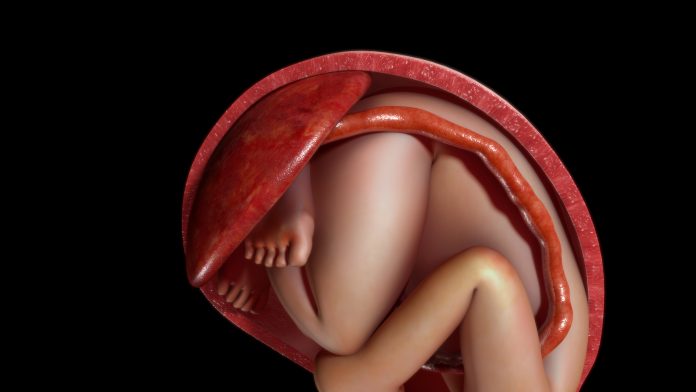Israeli therapeutics firm, Pluristem, have recently pioneered a breakthrough treatment which administers a unique placenta-based cell therapy to COVID-19 patients who have been identified as high-risk mortality cases
The race is well and truly underway to find a safe and effective treatment for the infectious COVID-19 disease. For many patients who contract the coronavirus, the health implications can be devastating: pneumonia, organ failure and mortality. However, scientists have recently discovered the therapeutic potential of placenta cells to treat patients suffering from severe COVID-19.
The treatment began with a small cohort of seven critically ill patients who had been hospitalised with acute respiratory failure and inflammatory complications as a result of contracting the coronavirus. Signs of cardiovascular and kidney failure were also present in four of these patients.
The Israeli scientists claim that a single placenta can treat 20,000 coronavirus patients. They are hopeful as some of the first patients who have received the treatment have already shown improvements.
Initial results show that after receiving the placenta cell therapy for a duration of one week, all patients have survived. Four of the patients have shown significant improvements in respiratory parameters and three are in the advanced stages of moving off ventilators.
Over in the US, Holy Name Medical Centre has become the first hospital in the country to use the placenta cell therapy to treat COVID-19 patients under the FDA compassionate use programme. The treatment involved injecting cells from the placenta into the arms and legs of the patient, which has resulted in several coronavirus-recovered patients being discharged from hospital.
Placenta cells have also very recently been applied in treatment on the first American COVID-19 patient. After being spending five weeks in a medically induced coma, the highly regarded Broadway set designer, Edward Pierce, received the placenta cell treatment and has since been discharged and reunited with his wife.
Whilst it is difficult to draw definitive conclusions from compassionate use programmes and small studies such as these, the initial data is promising. Much larger-scale studies are needed to confirm the effectiveness and results of the treatment.
In Europe, clinical trials using placental cells are expected to launch in Germany and Italy and will potentially expand to other European countries.
Placental cells to modulate COVID-19 cytokine storm
In severe cases of COVID-19, the immune system is hyper-activated and triggers a cytokine storm that can result in severe inflammation and damage to the lungs, ultimately leading to organ failure.
Prior clinical trials have demonstrated the unique properties of placenta-derived cells which regulate overactive immune systems and help reduce inflammation which is present in other conditions, such as lung fibrosis, acute kidney injury, muscle trauma and haematological disorders.
By administering placental cells in severe coronavirus cases, the treatment aims to essentially modulate the cytokine storm. The placental cells are programmed to secrete therapeutic proteins in the bodies of COVID-19 patients which then work simultaneously with the immune system to provide blood to the inflamed area.
As a result, the placental cells are able to form new blood vessels needed to restore the immune system and promote muscle regeneration to damaged areas of the lungs, thus reducing the lethal symptoms of pneumonia and organ failure caused by the coronavirus.
The role of placental cells in medicine: past, present and future
Human placental cells and tissues have been since the early twentieth century to treat burns and wounds. The placenta is comprised of two key parts: the chorion and the amnion, which contain powerful regenerative properties. For many years, Far Eastern medicine has considered placental tissue to be a powerful treatment of numerous diseases, whilst in Western medicine, amniotic membrane has been used as a biological wound dressing since the early 1900s.
Amniotic membrane is now routinely used on burn injuries due to its potent healing properties. The thin tissue contains high levels of collagen, hyaluronic acid and anti-inflammatory properties and serves as a scaffold for proliferation and differentiation of new cells. Numerous studies have shown the application of amniotic membrane as a biological dressing has resulted in rapid regeneration of cells and overall healing.
Furthermore, amniotic membrane has been used to treat common conditions such as dry eye. In a recent study, 84 patients received cryopreserved amniotic membrane to alleviate dry eye symptoms. The study concluded that the placement of the cryopreserved amniotic membrane enhanced the recovery of ocular surface health and reduced the signs and symptoms in patients with moderate to severe dry eye disorder.
Alleviation of pain, prevention of infection, accelerated wound healing and ease of use are just some of the key benefits of using amnion and placental cells in various different treatments. Amnion and placental cells are also widely recognised in the medical landscape for its unique compatibility. These cells are non-immunogenic which means they can be used on any patient, regardless of blood type, DNA or tissue.
Patients who are treated with cellular therapies are normally required to take immunosuppressant drugs to stop their bodies from rejecting the treatment. However, due to the nature of placental cells, these cells do not cause a substantial immune response and therefore can be used on any patient without the need of any additional treatment.
The therapeutic uses of the placenta are still being discovered by researchers and scientists across the world. Placental cells and amnion are now the subject of thousands clinical trials which are investigating its use in many debilitating conditions such as stroke, multiple sclerosis, arthritis and Crohn’s disease.
Initial positive results from a recent study have shown that amniotic membrane patches and placental cell injections could treat cardiovascular defects and inflammatory cardiovascular conditions.
More information regarding clinical trials and potential uses for the placenta can be found here.











